Exporting is an invaluable tool when it comes to managing a WooCommerce store.
And if you've been frantically searching your WordPress admin trying to find a way to export your orders with no luck, don't worry, you're not going crazy. WooCommerce doesn't offer a native way to export your orders; so you will need to rely on a plugin to do this for you.
There are plenty of plugin options to choose from, but that all suffer from a combination of limitations:
Slow export speeds.
Inability to customize the exports columns.
Limited filtering/segmenting to create your base export.
Inability to create automated recurring exports.
Performance impacts on your store.
With these limitations in mind, we built Metorik to solve all these issues.
So in this post, we'll show you how to use it to create an export with both a free plugin, and with Metorik. After that, you can decide which option is best for you.
While this post focuses on exporting orders, Metorik can also export customers, products, coupons, subscriptions and carts.
Ex-port-ing, let’s break it down
Exporting can be a valuable tool when it comes to your orders for a number of reasons:
Fulfilment: As your business continues to grow, you may considering either in-house fulfilment or outsourcing your fulfilment of customer orders. In either case, your order data will need to be exported on a daily basis and used to ensure products are sent to customers as quickly and accurately as possible.
Reporting: Looking at dashboards and reports often will give you the insights you need into your data; but sometimes you will need to export your orders to analyse the data yourself in Excel or Google sheets.
Backing up your data: Keeping a backup of all your data is crucial in the case of a system crash. Keeping a daily/monthly export of data can help you avoid a potentially disastrous situation.

Exporting your WooCommerce orders with a plugin
Both free and paid plugins can be a suitable solution in specific situations. Free plugins generally offer very limited functionally and often require to pay for a pro version with the full feature set. And while they may be a perfectly good solution in the early stages of your WooCommerce store, when you begin to reach thousands and tens of thousands of orders a month, you may run into significant performance issues.
Let's look at how you would export orders with one of the most popular free options - Advanced Order Export for WooCommerce.
Once you have installed the plugin, click Export Orders from the WooCommerce sidebar:
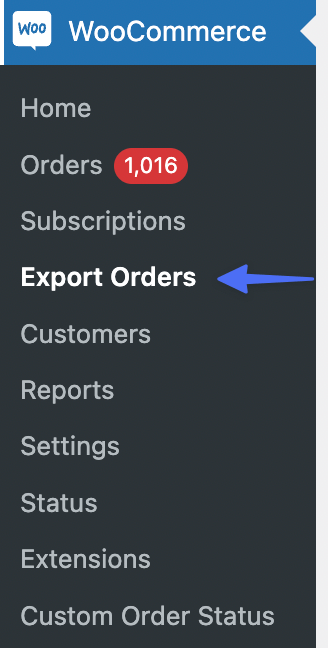
This will take you to the exporting menu where you have some options for tailoring your export. You can filter which orders to include by date range, statuses, custom fields, products, addresses and a few other fields:
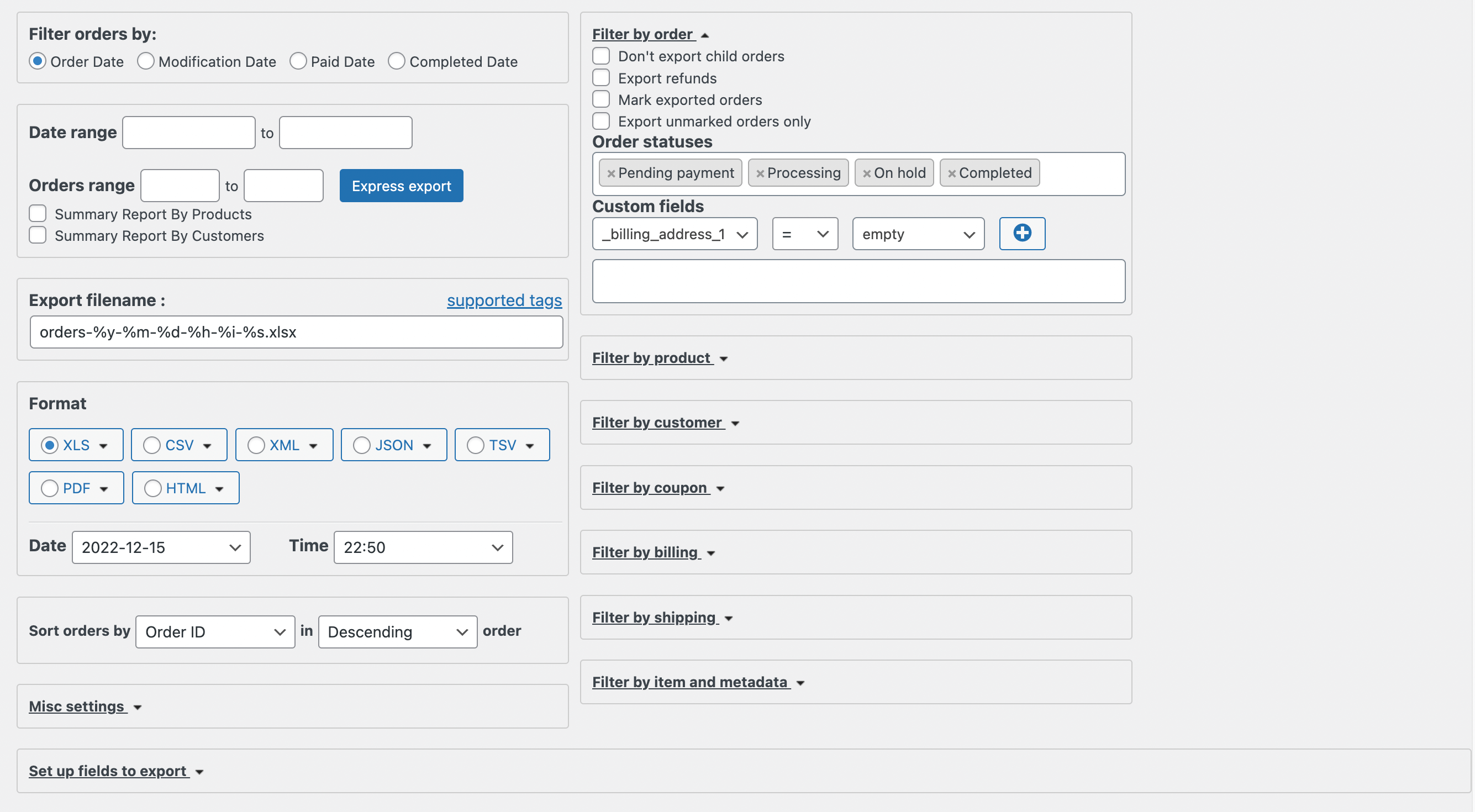
You can also edit which columns to include in the export by clicking Set up fields to export:
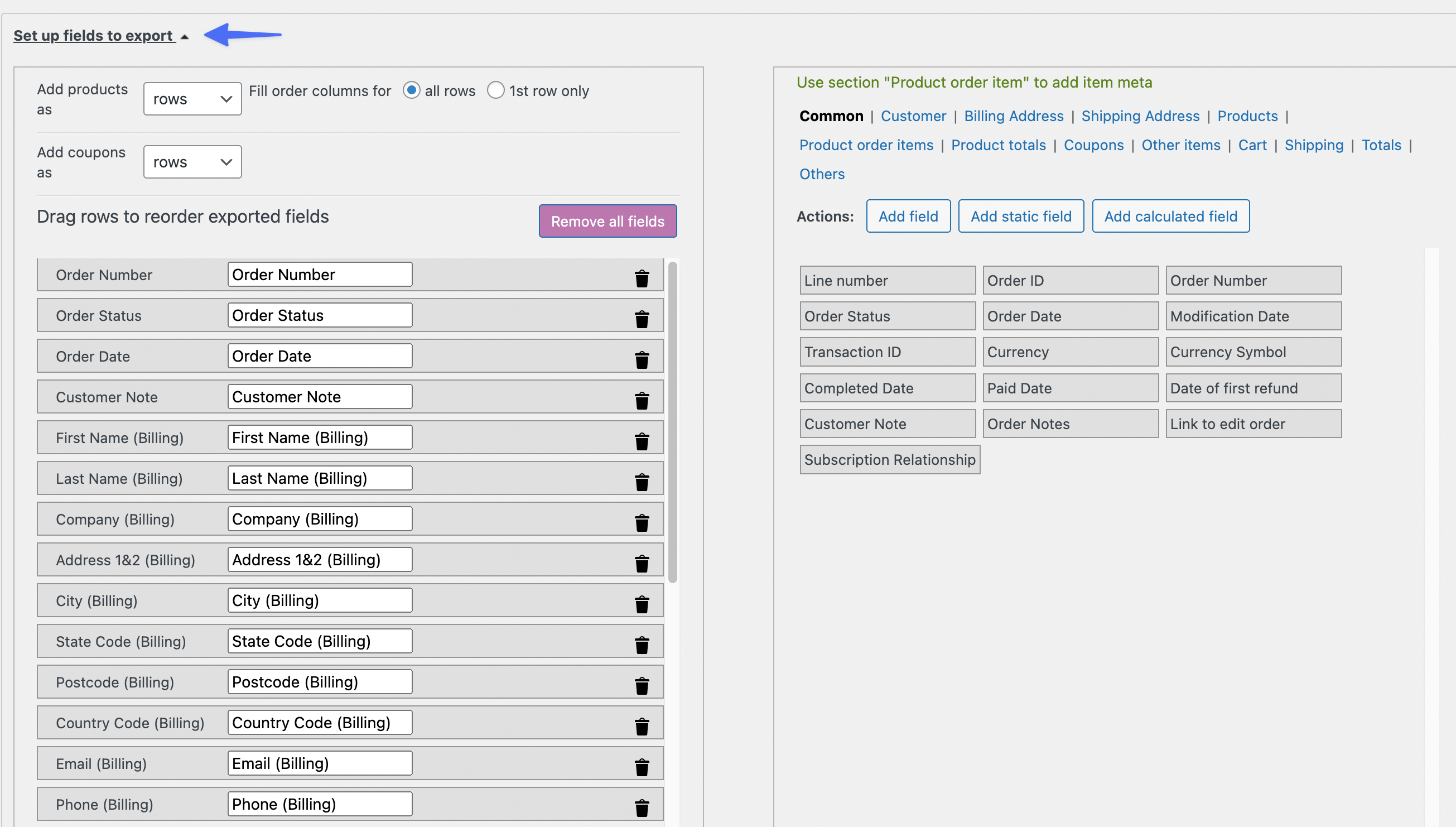
So with this in mind, let's create an export of all processing orders to send to our warehouse. I'll click the export button at the bottom of the page to generate the export — and here is the final result:

However, there is one big issue here. This export took nearly 1 minute to complete and it only around 1000 orders. In that time, we are unable to navigate anywhere else in the backend. Here's a video showing this:
Now instead of this export, let's say you needed to pull every order in the past year; this could be a large export of 10,000s of orders (maybe even more depending on the size of your store). And since this plugin keeps you locked on the export page while it's processing, you will be wasting valuable working time waiting for your exports to finish.
Larger exports can also be very resource intensive. And if you don't have enough server capacity, it could actually impact the experience for any users on your store while running the export on the backend.
So I'd only recommend this plugin if:
You are just starting out and have a tight budget.
Have a small store with only a few thousand orders at a maximum.
Only need to create exports infrequently that are basic.
Let's now take a look at creating the same export in Metorik.
Exporting your WooCommerce orders with Metorik
This is what the exporting page looks like in Metorik:
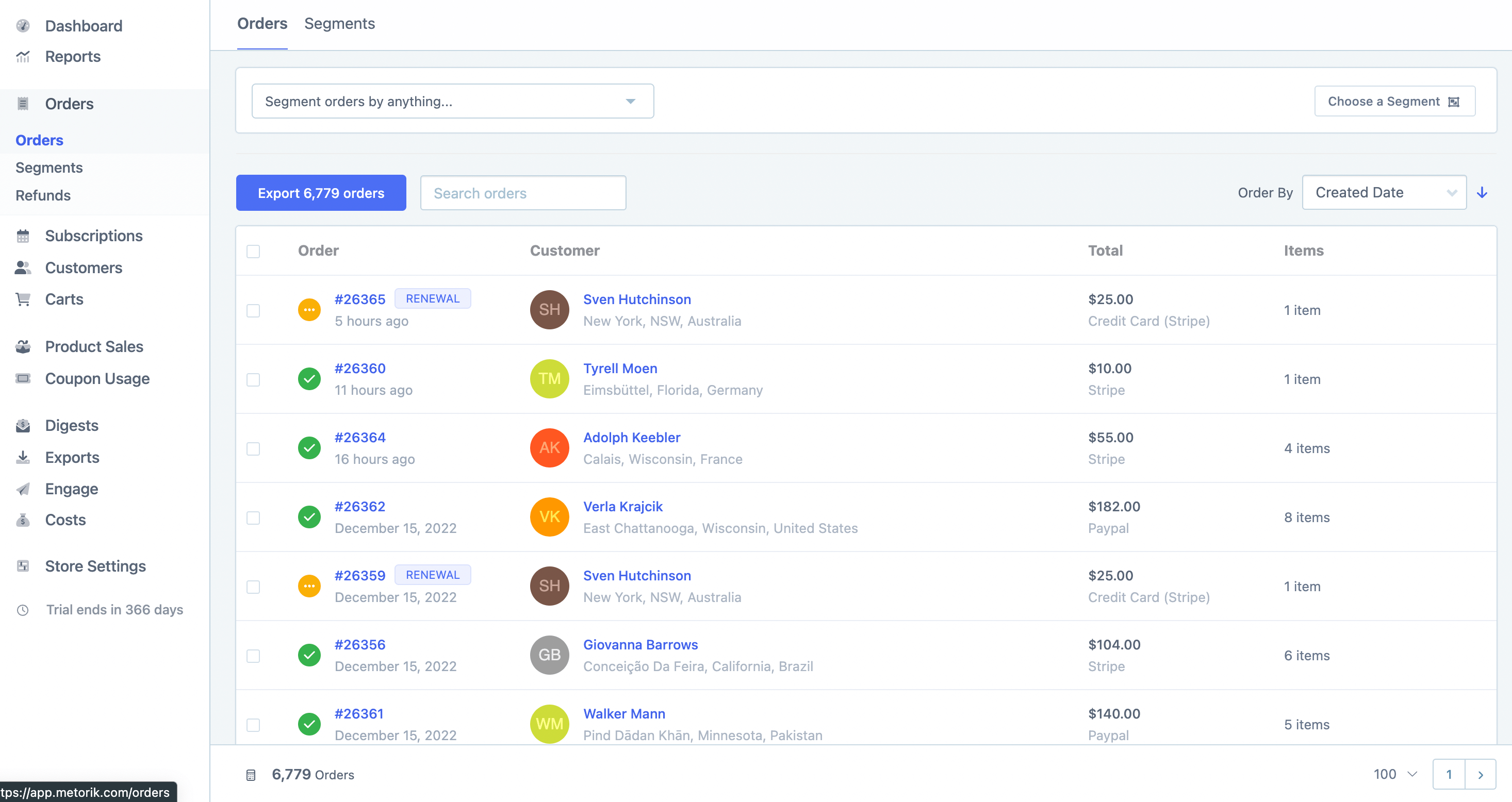
As you can see it's a much cleaner UI that's broken into 2 components:
1. You first create the order segment you need. You can create very niche and targeted segments using 100s of different filters. You will also be able to see in real time exactly which orders are in the segment. So for example, all processing orders:
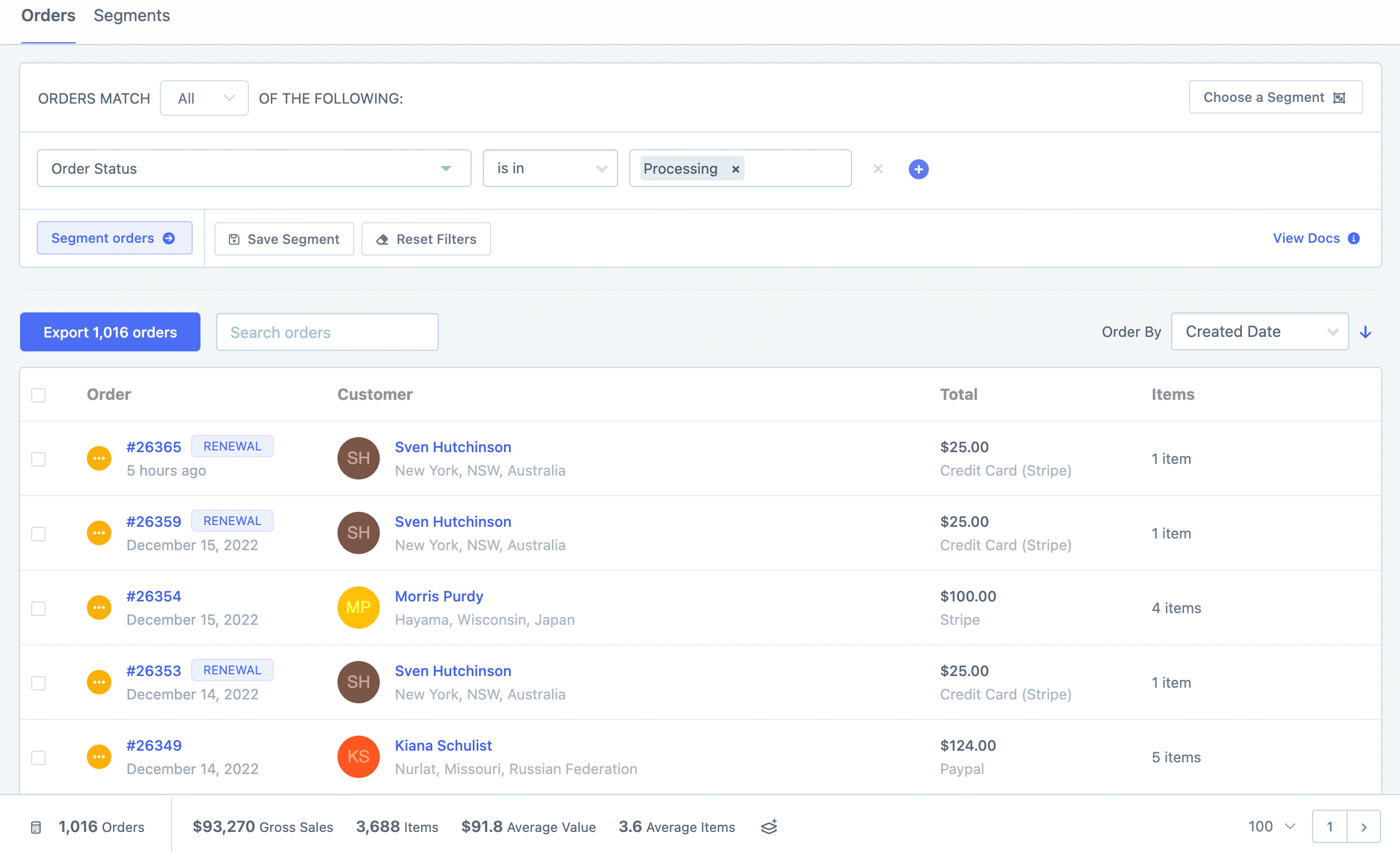
2. Once you are happy with the segment, you then click the export button to customize the export. You can customise the columns, include custom meta fields, and configure the export to add each line item to it's own row if you prefer:
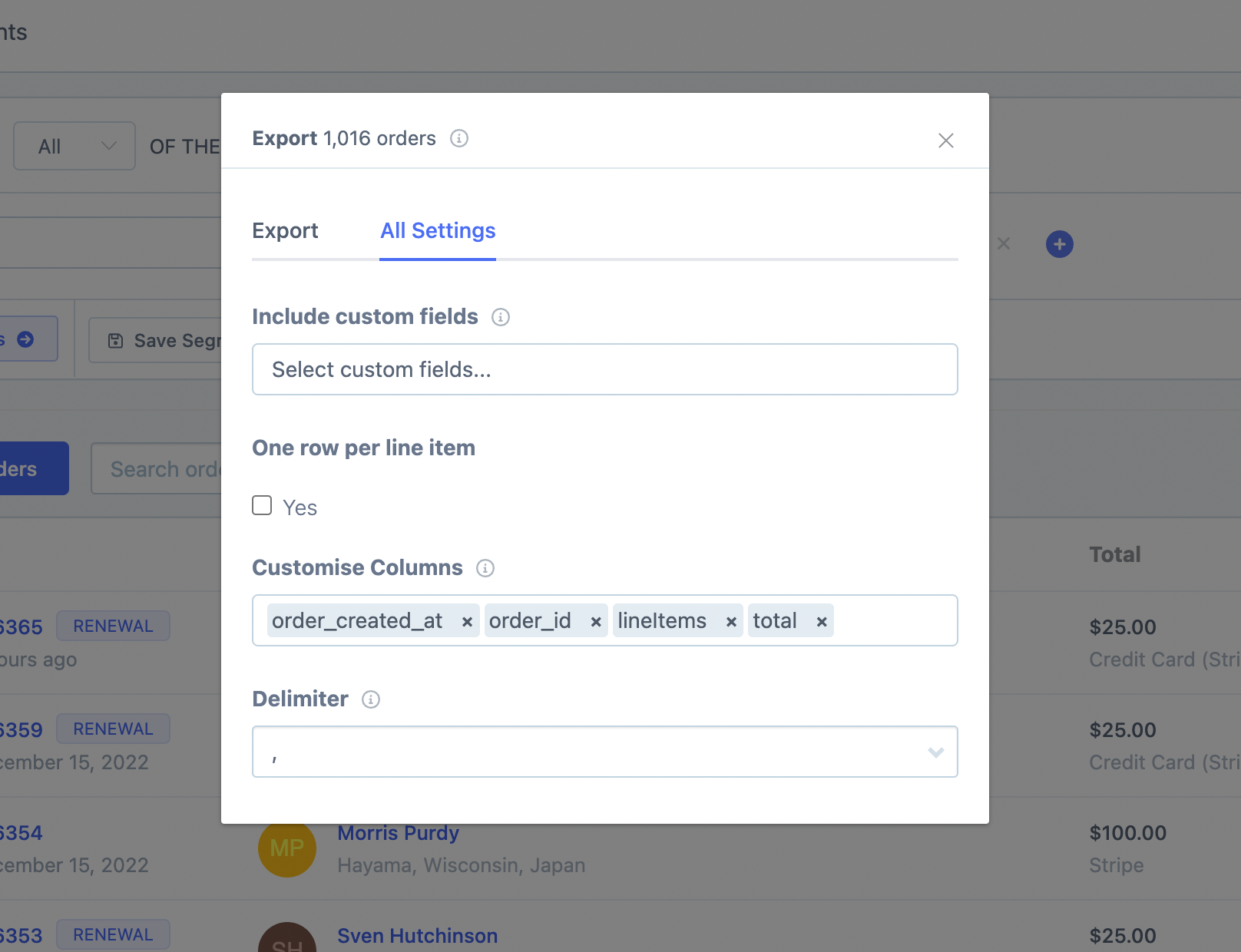
Once you are happy with the settings, click export and Metorik. And unlike the plugin we used before, the file is exported and downloaded in under 10 seconds:
And if the segment you are exporting has over 5,000 orders, instead of making you wait while it's processing, we'll email you once it's ready, so you can get on with whatever you are working on.
Metorik is able to export your data this quick as it's a web-app that runs alongside your WooCommerce store. We sync in real-time with your store to make sure all the data is instantly updated.
In practice, this means that when you create an export, rather than using your own web server to process the export, it's processed on our servers. As a result we are able to process your exports very quickly with absolutely 0 impact on the performance of your website.
Metorik's exporting system had a few other handy features:
Automatic recurring exports
Rather than manually pulling the same export every time, you can create it once, and schedule it to send every day/week/month to your email or Slack channel.
So with the export we created above, you may want processing orders sent to the warehouse every week. You can completely automate this process by segmenting like this:

And then creating a recurring export that sends every Monday at 9am:

Exporting Dashboard
Metorik also has a dedicated exporting dashboard so you can keep track of all scheduled exports, and any recent exports:
So on the saved exports page, we can see the recurring export we just created:
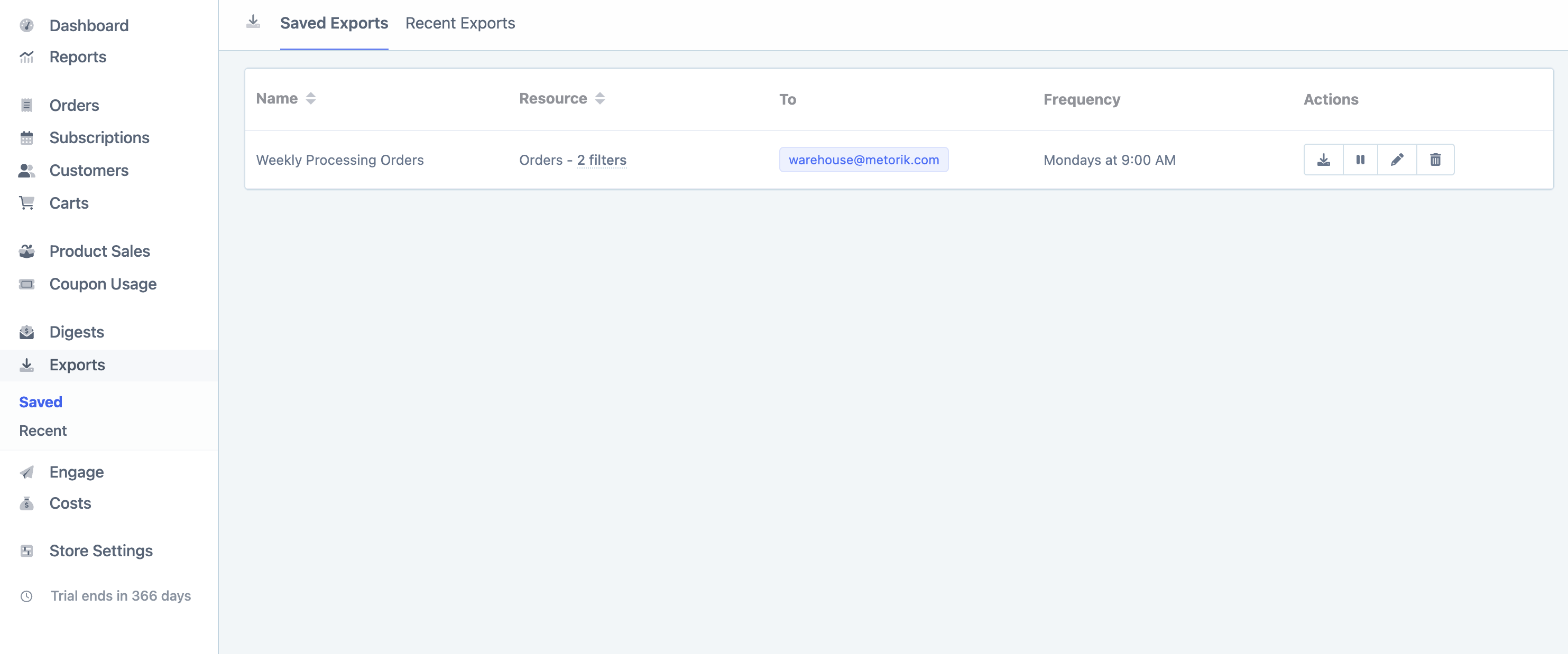
You can easily download this export right away, pause, edit or delete it.
The recent exports page shows all exports that have been downloaded from your store recently:
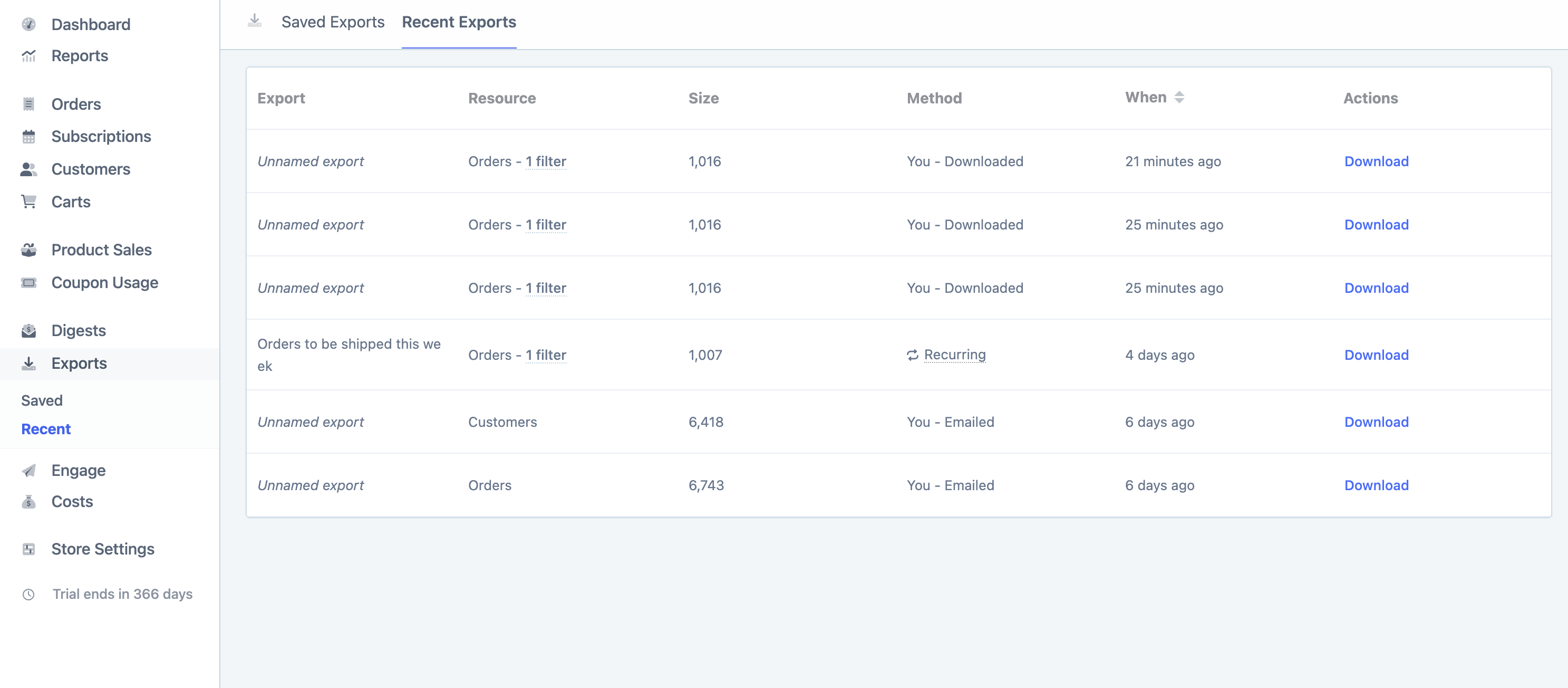
If you have multiple team members connected to your Metorik account, you will be able to see all exports from every team member from this page (if you're the admin of the store).
Wrapping up
Exporting orders from WooCommerce can be a little more complex and involved than initially meets the eye.
A free plugin may be a suitable solution for those who are just starting out. But for those of you who either run a bigger store or find yourself needing to export regularly, a solution like Metorik may be a great choice. It will start saving you time and money from your very first export.
.png)
-1549438730.jpg)
